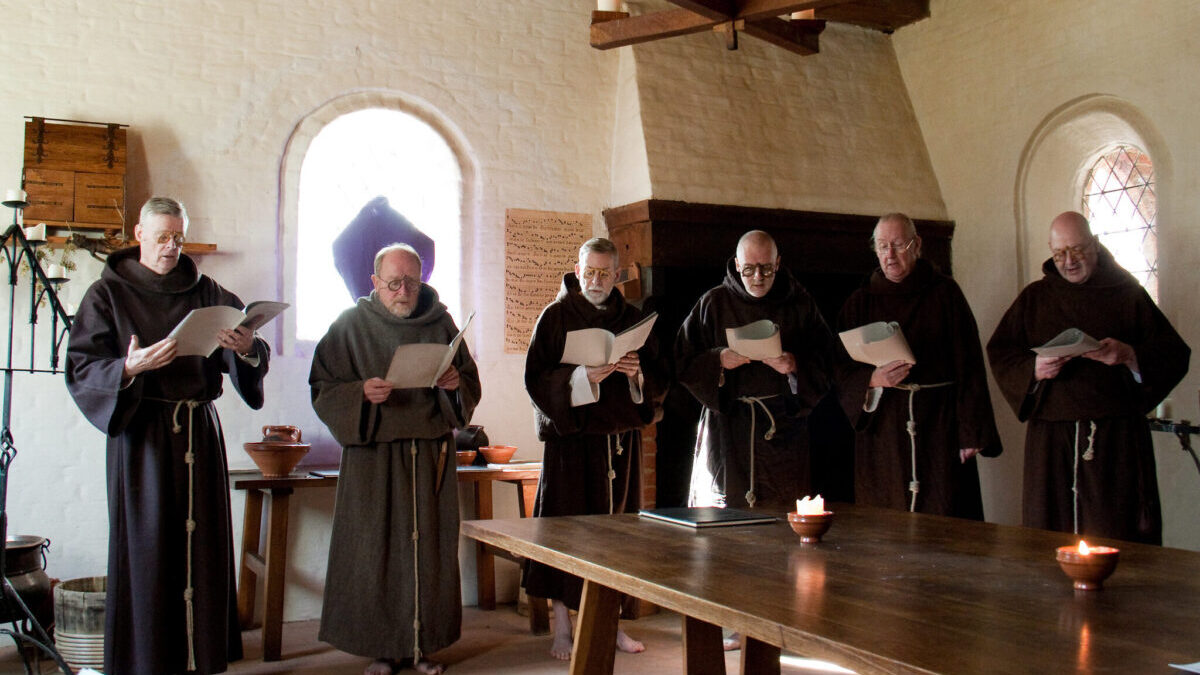As a rule, composers are more expressive when inspired by love and sorrow, which is why they’re pretty good at break-up songs. But introduce the element of the divine, and the product is out of this world. So, while it may come across as morbid and depressing, some of my favorite music comes from the Lenten season.
Lent is the liturgical season preceding Easter, which venerates Christ’s passion and death. It is a time haunted by the guilt mankind has earned by sin and marked by a call for repentance and conversion.
Christians spend these 40 days recalling how man’s sins and shortcomings required that a merciful God offer Himself as a sacrificial victim to satisfy His justice. If any one aspect of the season aptly portrays its mood, it’s the music.
Music can set the spirit and trajectory of our thoughts, and penitential music is no different. Here is a selection of hymns, ancient chants, and choral music to prepare you for the season of Lent.
‘Amicus Meus’ by Tomás Luis de Victoria
This polyphonic choral piece comes from Tenebrae, one of the most impressive liturgies of the Lenten season. The service is celebrated three days preceding Easter and belongs to the Divine Office, the reciting of psalms that punctuated the daily life of monks for centuries. It begins either after nightfall or in the early morning of Holy Thursday, Good Friday, and Holy Saturday.
On Holy Thursday, the service tells the story of the Last Supper and Christ’s subsequent betrayal in the Garden of Gethsemane. “Amicus Meus” comes from the reading assigned for that day and commemorates the kiss by which Judas betrayed Christ.
It would have been better for that man if he had never been born.
The unhappy wretch repaid the price of blood
And in the end, hanged himself.
Tomás Luis de Victoria’s eloquent use of the music to portray the text results in one of the most beautiful uses of suspension in early Baroque music. At the time in the text when Judas ends his life, Victoria orchestrates a stunning series of suspensions, ending the piece without a musical resolution.
‘O Sacred Head Surrounded’ by J.S. Bach
No Lent would be complete without this well-known and loved piece. The text began as the concluding series of stanzas in a poem by Bernard of Clairvaux in the 12th century. Bernard divided the longer poem, “Salve Mundi Salutare,” into seven sections, each one dedicated to a part of Christ’s body.
The final section, which reflects on Christ’s head, was set to music by Hans Hassler. Nearly a century later, J.S. Bach reharmonized and popularized the tune in his “St. John’s Passion,” composing the version most congregations know.
There are a variety of translations, but regardless of the English text, the poem is striking in its bluntness. It commemorates the crown of thorns and the accompanying grief and shame of Christ’s sufferings — ultimately caused by our sins. The poet closely identifies himself with the suffering of God, praying:
O Sacred Head, what glory, what bliss till now was thine!
Yet, though despised and gory, I joy to call thee mine.
What Thou, my Lord, has suffered, was all for sinner’s gain.
Mine, mine was the transgression, but Thine the deadly pain.
‘The Reproaches’ Chant
This ancient Gregorian chant is sometimes sung during the Good Friday liturgies. As the title suggests, the verses are a series of questions and reproaches which compare God’s faithfulness in bringing his chosen people out of Israel to the suffering experienced during His passion.
My people, what have I done to you?
Or how have I grieved you?
Answer me!
Because I led you out of the land of Egypt,
You have prepared a cross for your Savior
For Forty Years, I led you
Safely through the desert
I fed you with manna from heaven,
And brought you to a land of plenty;
But you lead your Savior to the cross.
The refrain is a beautiful nod to Byzantine liturgy and repeats the “Trisagion” in Latin and Greek. This traditional Eastern prayer is standard in the Byzantine rite and sung throughout the Divine Office. Its inclusion in both languages represents a beautiful musical unification of the Eastern and Western liturgical traditions.
Holy God!
Holy and Strong!
Holy Immortal One, Have Mercy on us!
‘Miserere’ by Gregorio Allegri
The story goes that, in 1770, a 14-year-old boy named Wolfgang Amadeus Mozart attended a Good Friday service at the Vatican. The service concluded with a piece of music so beautiful that the Vatican had kept it a jealously guarded secret for over a century.
That night Mozart transcribed the piece from memory, gracing the world with one of the most iconic pieces ever written for the penitential season.
Regardless of the fantastic story surrounding its publicization, Gregorio Allegri’s “Miserere” deserves its popularity — it is a hauntingly beautiful setting of Psalm 51.
Have mercy upon me, O God: after thy great mercy.
According to the multitude of Thy mercies, do away mine offenses.
Wash me thoroughly from my wickedness: and cleanse me from my sin.
The psalmist addresses God in a hopeful tone, repenting of his past sins. The words evoke a sense of peace and calm.
For thou desirest no sacrifice, else would I give it Thee: but Thou delightest not in burnt offerings.
The sacrifice of God is a troubled spirit: a broken and contrite heart, O God, shalt Thou not despise.
Christianity has a rich wealth of music dedicated to the penitential season, and these pieces are only the beginning, a minuscule representation that hardly do the category justice. This Lent, take some time to explore this genre of beautiful music.








